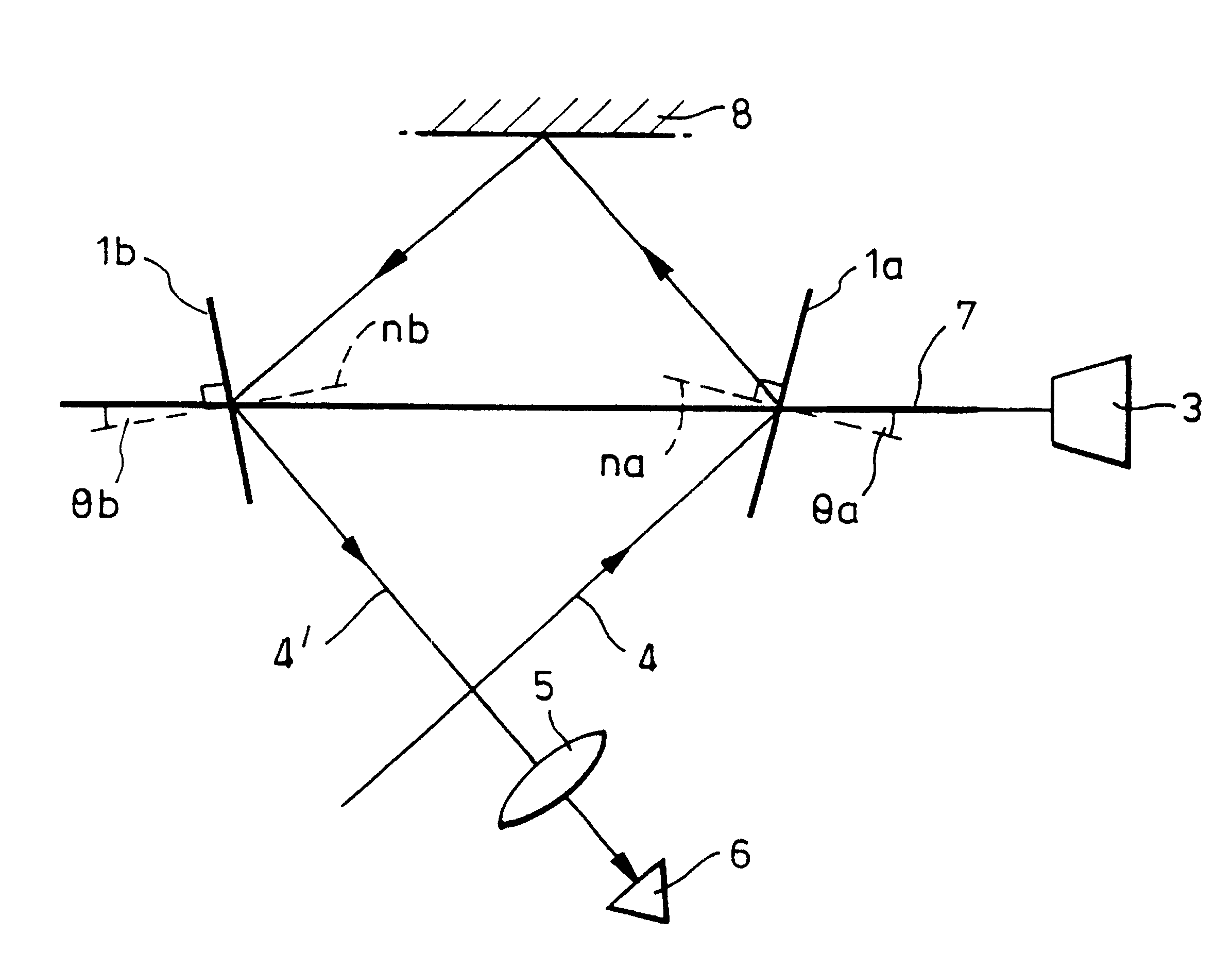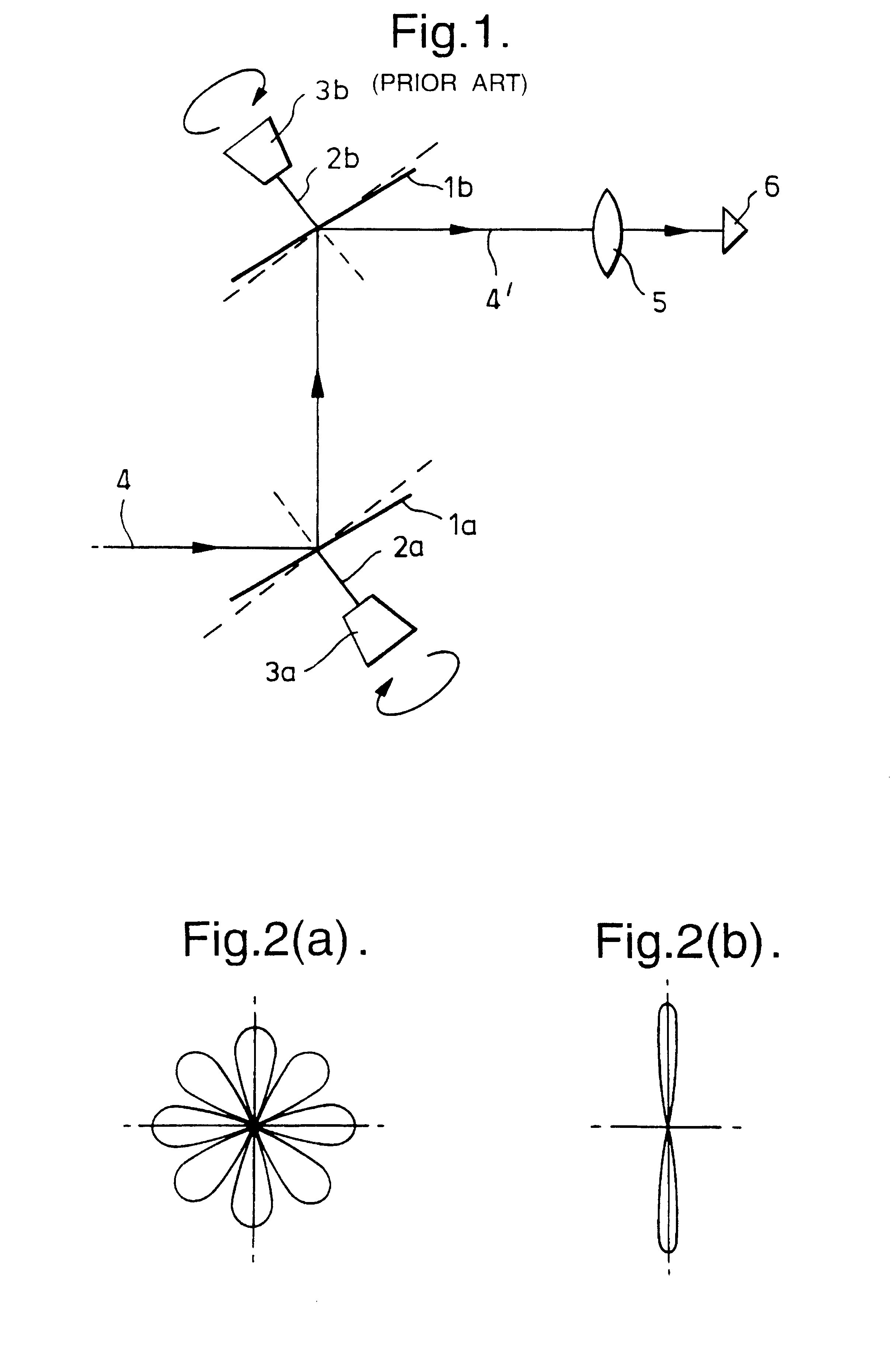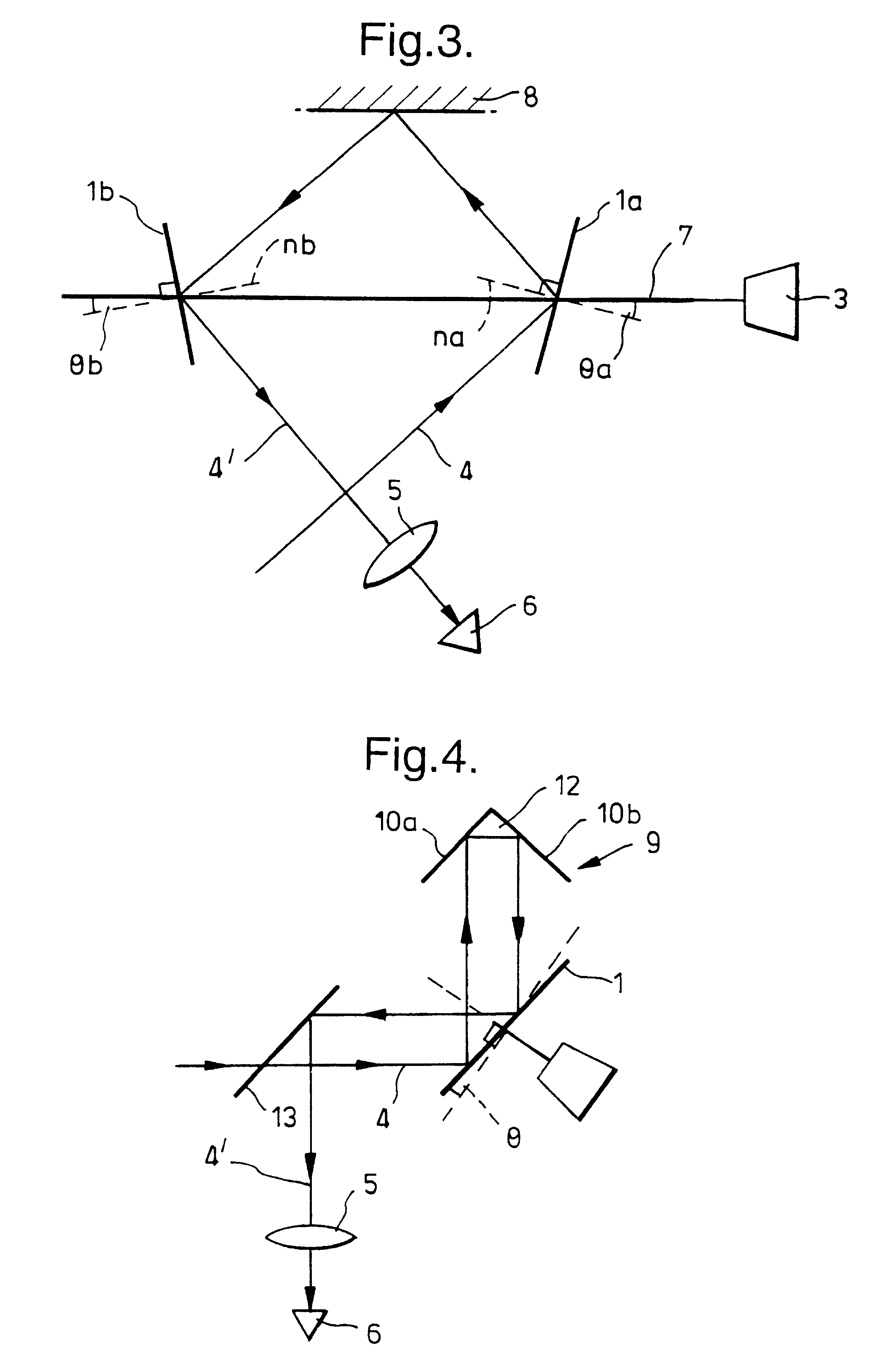Scanning apparatus
- Summary
- Abstract
- Description
- Claims
- Application Information
AI Technical Summary
Benefits of technology
Problems solved by technology
Method used
Image
Examples
Embodiment Construction
Referring to FIG. 1, a conventional two disc rotating system comprises two discs 1a, 1b, each supported on a separate axis 2a,2b which is connected to a rotor mechanism 3a,3b. Each axis 2a,2b is inclined a few degrees to the normals to the faces of the discs 1a,1b. Typically the angle of inclination is 5.degree.. As the discs 1a, 1b rotate about their respective axes, incident radiation 4 from the scene is incident on the first rotating disc 1a and is reflected at oblique incidence towards the second rotating disc 1b where it experiences a second reflection. From the second rotating disc 1b, radiation may be passed to an imaging or receiving system, typically comprising collection optics 5 and a receiver 6 (or receiver array). For example, the receiver 6 may be the receiver element of a millimetre wave imaging camera or the receiver element of a radar system.
The two discs 1a,1b may be inclined at the same or different angles to the normal to the respective disc face and may rotate w...
PUM
 Login to View More
Login to View More Abstract
Description
Claims
Application Information
 Login to View More
Login to View More - R&D
- Intellectual Property
- Life Sciences
- Materials
- Tech Scout
- Unparalleled Data Quality
- Higher Quality Content
- 60% Fewer Hallucinations
Browse by: Latest US Patents, China's latest patents, Technical Efficacy Thesaurus, Application Domain, Technology Topic, Popular Technical Reports.
© 2025 PatSnap. All rights reserved.Legal|Privacy policy|Modern Slavery Act Transparency Statement|Sitemap|About US| Contact US: help@patsnap.com



